Writing Teaching Resources
Teaching writing strategies and the writing process this school year? Explore a comprehensive collection of teacher resources for elementary and middle school ELA teachers — all created by teachers!
Stocked with graphic organizers, writing prompts, templates, worksheets and so much more, this collection of printable and digital activities is designed to help you as you help your students become more effective communicators and unleash their creativity and imagination.
Save time on lesson planning with resources that have been through a careful review process by an expert member of our teacher team to ensure they're ready for your classroom and your students!
Are you looking for tips and tricks to add to your teacher toolkit this school year? Read on for a primer from our teacher team, including engaging activities for teaching writing in elementary and middle school and a look at some of the different writing strategies your students will need to learn.
11 Writing Strategies Kids Should Know by the End of Middle School
We can't talk about teaching kids to write without talking about the different writing strategies that can help them do just that!
When it comes to teaching our students to become confident writers who articulate their ideas effectively, here are some of the strategies our teacher team prioritizes:
1. Brainstorming
Brainstorming is something we often do in the classroom, and it's a crucial part of learning to generate the ideas that will drive students' writing as they progress through their educational journey. Kids should know how to create a list of potential topics or points related to a particular writing assignment.
With younger students, this is often done as a whole group by writing ideas and points on chart paper. In upper grades, students transition over to using text-based materials to generate ideas and talking points.
2. Outlining
Before diving directly into any assignment, our students should be able to create a structured framework or outline. Teaching students how to create this outline will help them organize their thoughts and arguments for penning their essays, reports and research papers.

3. Using Graphic Organizers
Technically graphic organizers are classroom tools, so you may not think of their use as a writing strategy per se. However, learning to use these tools is another means of providing kids with the tools they need to organize their ideas and information before they sit down to write.
These organizers are particularly useful for expository writing — students can use them to outline main ideas, supporting details, and transitions.
Students can also take advantage of story maps when they are working on narrative writing to plot the key elements of a story, such as characters, setting, conflict, rising action, climax and resolution.
Graphic organizers such as the OREO strategy and hamburger paragraph are also great tools for students to use when working with opinion and persuasive texts.
4. Freewriting
Writer's block is the enemy of creativity, and it can easily frustrate young students who don't know where to begin.
When students freewrite, they write continuously without worrying about grammar or punctuation. This writing strategy can be extremely freeing — hence the name! — and helps frustrated writers move past that writer's block, generating fresh ideas.

5. Peer Editing
Learning to review and provide constructive feedback on each other's work is a great writing strategy to employ in your classroom to help students improve their writing quality and enhance their editing skills.
The strategy allows your students to learn from one another, and it arms them with an important tool they can use well into the future — calling on peers to provide a critical eye to a piece of writing.
6. Using Sensory Language
Working on descriptive writing? With this writing strategy, students engage the reader's senses through vivid and sensory language to create a more immersive experience.
7. Including Transitions and Connectives
As students become more proficient in the writing process, learning to use transitional words and phrases allows them to create smooth transitions between sentences and paragraphs. This strategy makes their writing more coherent and polished.
8. Incorporating Evidence
In persuasive, opinion, and expository writing, students are taught to support their claims with evidence and examples to strengthen their arguments.
It takes some practice to train your students to use evidence in their writing, so it's often a good idea to start with something simple, like the R.A.C.E.S. strategy.
9. Crafting a Thesis Statement
In expository, opinion, and persuasive writing, crafting clear and concise thesis statements that summarize the main point or argument of their essay helps students be more focused and organized in their writing. This strategy can also have the effect of empowering students to express their ideas confidently and persuasively.
10. Incorporating Introductions and Conclusions
With this strategy, students practice crafting effective introductions and conclusions that grab the reader's attention and leave a lasting impression.
11. Following a Revision Checklist
Teaching your students to use a revision checklist is a strategy that will help them be more self-reflective, evaluating their own writing against the checklist criteria and becoming more aware of their strengths and weaknesses.

- Plus Plan

Easter Writing Prompts - Dear Diary
Encourage imagination with a fun set of Easter writing prompts!
- Plus Plan
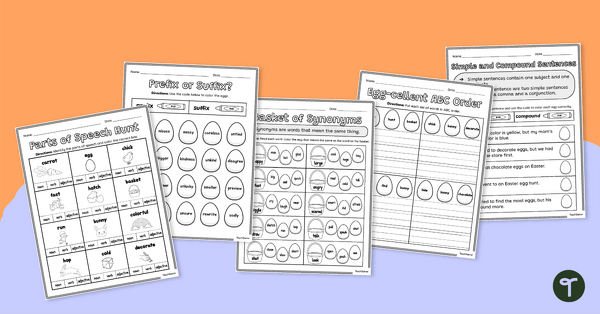
Easter Grammar - Worksheets
Practice grammar conventions with a pack of Easter English worksheets.
- Plus Plan
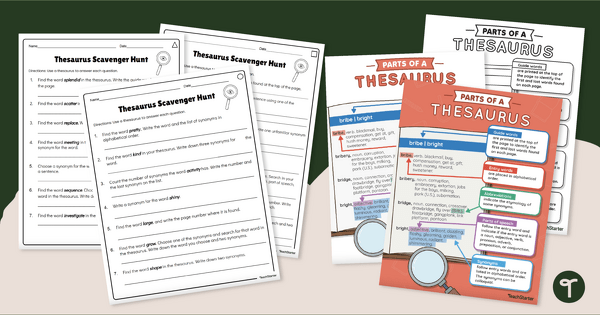
Using a Thesaurus - Worksheets and Anchor Charts
Practice using a thesaurus with a printable thesaurus anchor chart and differentiated practice worksheets.
- Plus Plan
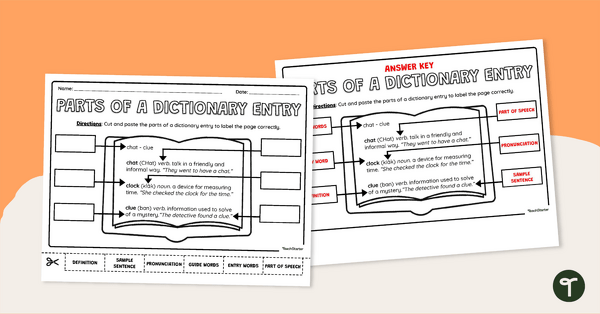
Dictionary Entry Cut and Paste Worksheet
Practice identifying the parts of a dictionary entry with this cut-and-paste worksheet.
- Plus Plan

Parts of a Dictionary Entry Flipbook
Learn and practice dictionary skills with this Parts of a Dictionary Entry Flipbook.
- Plus Plan
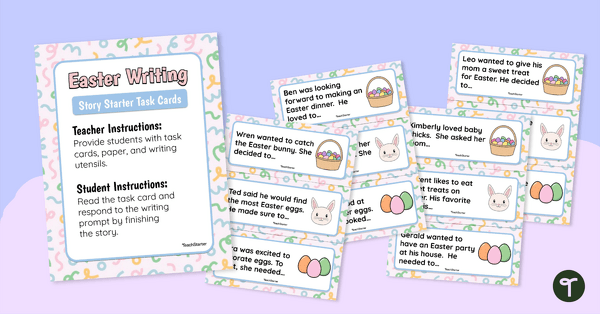
Easter Writing Prompts- Story Starters
Create Easter-themed stories using these Easter writing prompt cards.
- Plus Plan
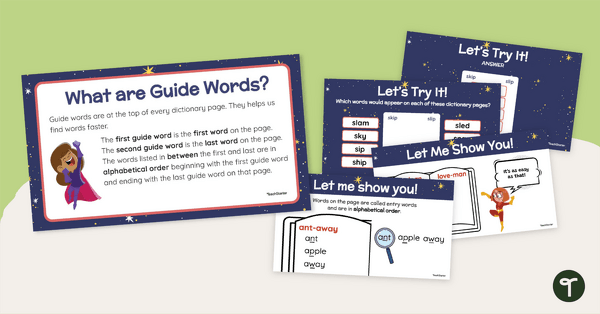
Guide Words Instructional Slide Deck
Learn how to use guide words to find words in a dictionary with this Instructional Slide Deck.
- Plus Plan
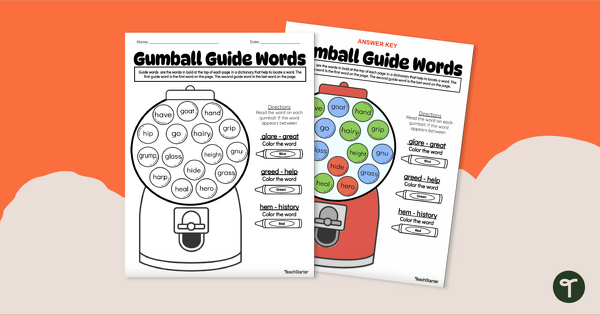
Gumball Guide Words Worksheet
Practice identifying words within guide words from a dictionary with this fun gumball-themed worksheet.
- Plus Plan
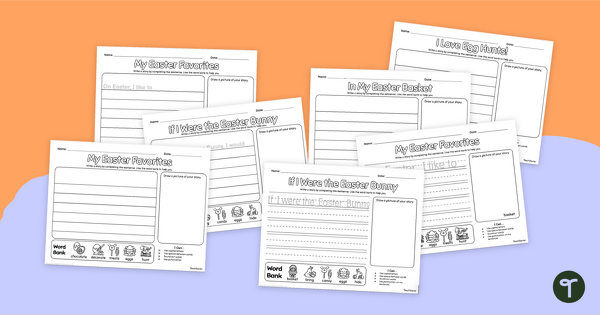
Easter Writing Prompts - Differentiated Worksheets
Inspire your students to get writing with these easy-to-use Easter writing worksheets.
- Plus Plan
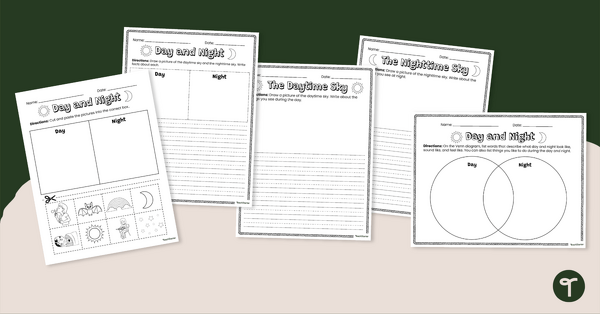
Day and Night Worksheets
Use this set of printable worksheets to encourage students to think about the differences between night and day.
- Plus Plan
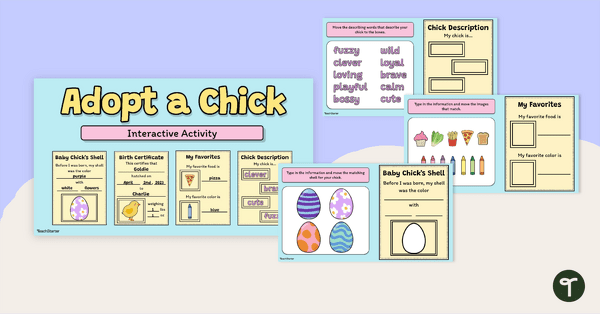
Adopt a Chick - Interactive Writing Activity
Have some fun adopting a digital chicken with this interactive Easter writing activity.
- Plus Plan

Easter Writing Prompts and Word Wall Pack
Provide your students with Easter Writing Prompts and vocabulary cards to create a fun Easter Writing Center.
- Plus Plan

Strong Action Verbs Word Wall
Print a set of strong verbs word wall cards to help your students boost their writing skills!
- Plus Plan
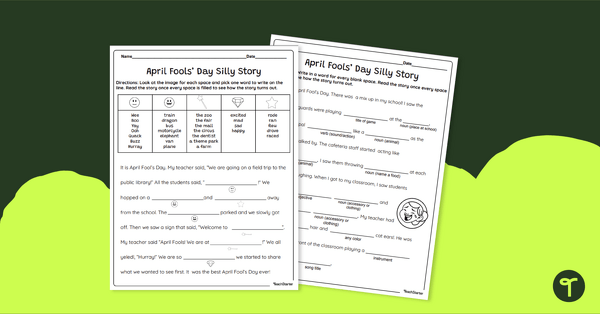
April Fool’s Day Silly Story Worksheets
Celebrate April Fools' Day in the classroom with these fun silly story worksheets.
- Plus Plan
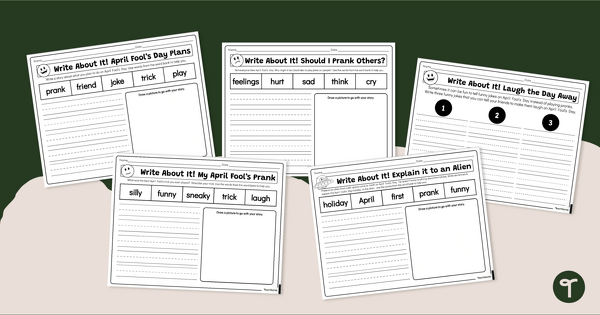
April Fools' Day Writing Prompts
Celebrate April Fools' Day in the classroom with these fun writing prompt worksheets.
- Plus Plan
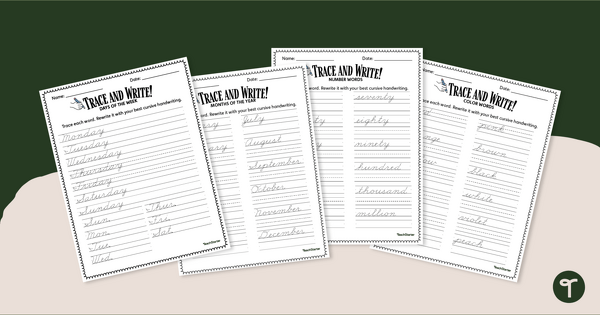
Cursive Worksheets - Days, Months, Colors, Numbers
Trace and write days of the week, months of the year, number words, and color words in cursive.
- Plus Plan
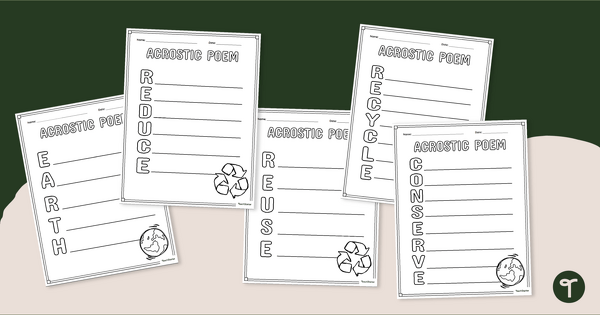
Earth Day - Acrostic Poem Template Pack
An acrostic poem template pack to use in the classroom to celebrate Earth Day and National Poetry Month.
- Plus Plan
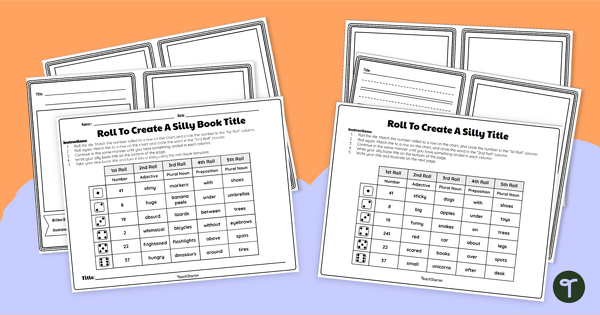
Roll to Create a Silly Book Title - Differentiated Writing Activity
Have some fun with a hands-on Read Across America activity using a die and chart to create a silly book title and storybook.
- Plus Plan

An Inspirational Woman - Biography Template
Research and complete this Inspirational Woman Profile template during International Women’s Day.
- Plus Plan
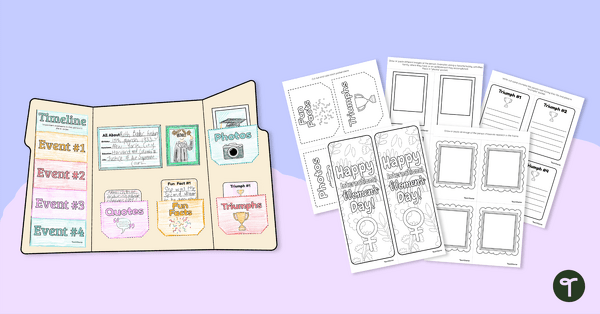
Famous Women in History - Biography Lap Book Template
Create an interactive biography of an inspirational woman with a biography lapbook.
- Plus Plan
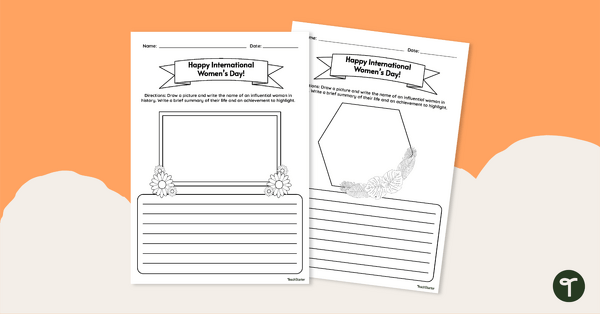
International Women’s Day Writing - Biography Template
Learn and write about an influential woman in history with a biography template.
- Plus Plan
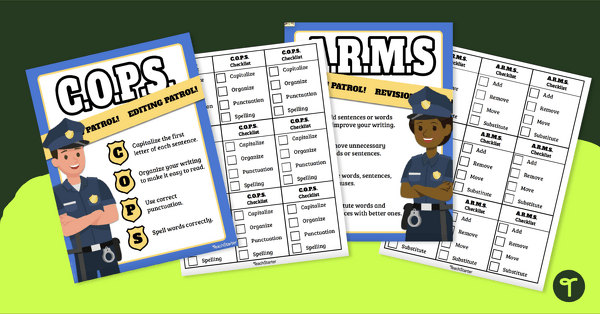
C.O.P.S. and A.R.M.S Editing Anchor Charts
Encourage students to proofread and edit their writing using the C.O.P.S. and A.R.M.S acronyms with printable writing anchor charts and editing checklists.
- Plus Plan
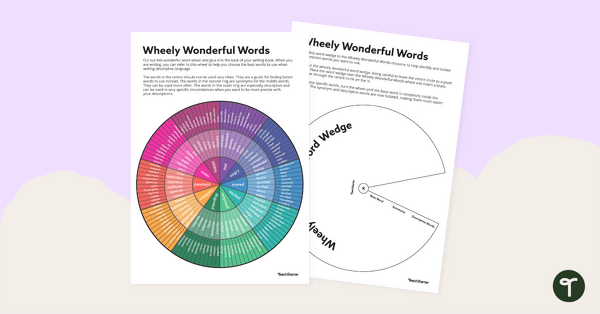
Wheely Wonderful Words – Emotional States Vocabulary
A word wheel of synonyms and similar words used to describe emotional states.
- Plus Plan
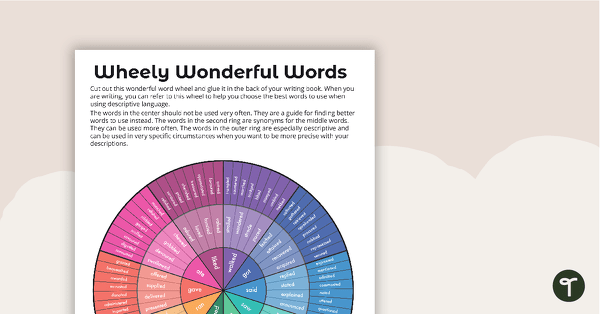
Wheely Wonderful Words – Overused Verbs
Get rid of those overused verbs with a word wheel of synonyms.
- Plus Plan
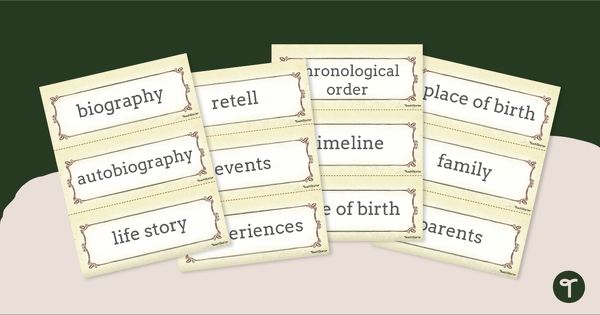
Biography Word Wall
A set of 30 vocabulary words related to biography writing.
- Plus Plan
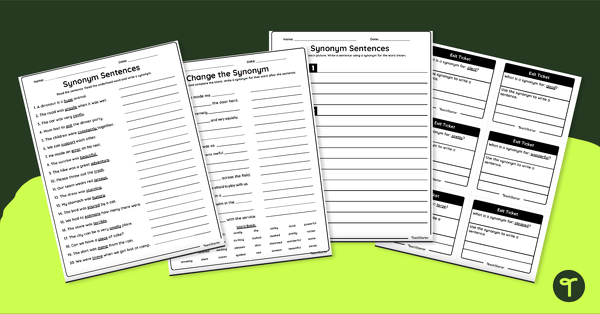
Synonyms Worksheet Pack- Grades 2-3
Practice identifying and using synonyms with a set of four synonym worksheets for 2nd and 3rd Grade.
- Plus Plan
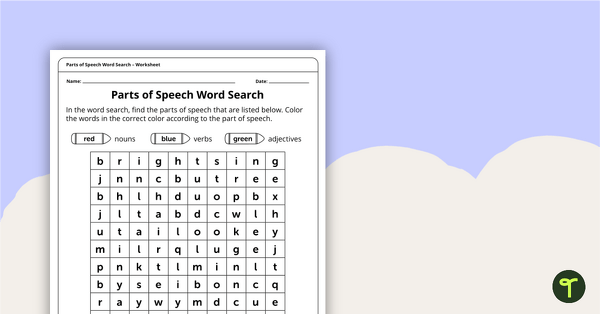
Parts of Speech Word Search – Nouns, Adjectives, and Verbs – Worksheet
A word search where students find and categorize nouns, adjectives and verbs.
- Plus Plan

Sloth Story Starters - Animal Writing Prompts
Help students get over writers’ block with these cute sloth-themed writing prompts.
- Plus Plan
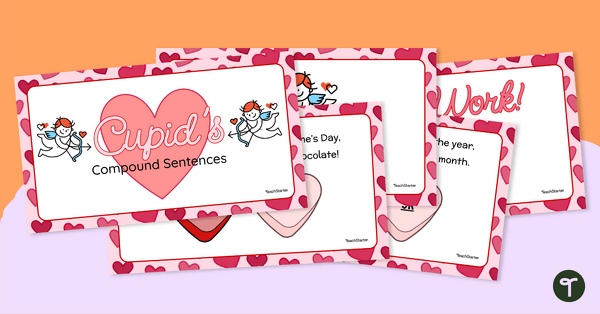
Cupid's Compound Sentences Valentine's Day Activity
Build some sweet sentence writing skills using a fun Valentine’s Day Compound Sentence interactive activity.
- Plus Plan
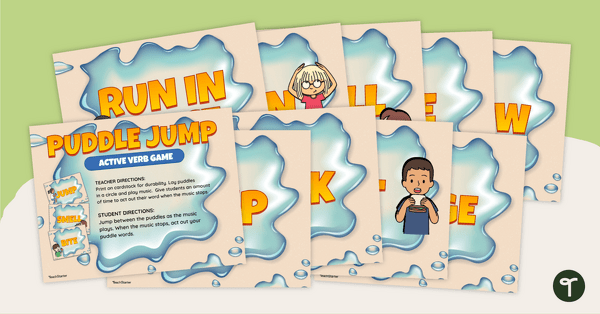
Puddle Jump Active Verb Game
Hop into your next verb lesson with a fun Puddle Jump Active Verb Game.
- Plus Plan
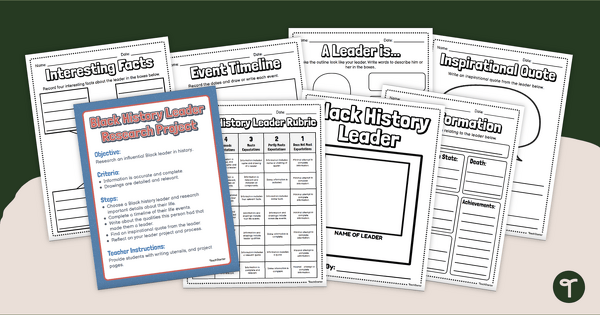
Influential Black Leaders - Research Project
Help your students learn about and recognize some of the most influential Black leaders in history with Black History Month Research Project.
- Plus Plan
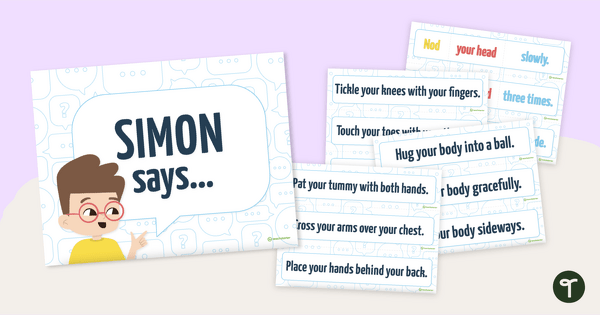
"Simon Says" Commands - Card Deck
A set of 24 instruction cards to use when playing "Simon Says."